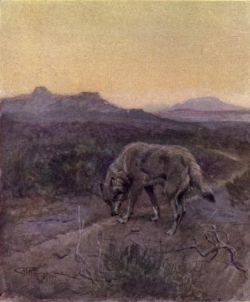Street & Smith’s Top-Notch Magazine started as a magazine aimed at boys but soon changed to a general-interest adventure pulp, lasting from a start in 1910 until 1937. The March 15, 1923, issue is the first I’ve read, and it has the expected assortment of long and short fiction, including serial parts, filled out with a few poems and some jokes. The principal contents are as follows, with my comments.
- “Complete Novel”
“The Will of the Mounted,” by James French Dorrance. The frequent contributor to Top-Notch here relates the adventure of a Mountie who heads to a new mining settlement undercover, only to find a murdered man wearing the uniform he had shipped ahead for use when it was time to come out in the open. He investigates the killing of the impostor but also tries to find out what the dead man was after that he thought “worth more than gold.” Good action and unusual characters make this an entertaining lead-in to the issue, and I’m now looking forward to reading the one Dorrance book I own (Never Fire First, also a northern, and apparently first published in Top-Notch in 1924). Recommended. - Novelettes
- “That Sealed-Room Tragedy,” by Vincent Starrett. Series detective Jimmie Lavender is called in by a friend after the death of the friend’s employer in the titular sealed room — a death the friend thinks not a natural one. So was it murder, suicide, or an accident? And if the first, how did the culprit escape? There’s a touch of the macabre in the fact that the victim, an author, was himself at work on a book involving a locked-room death when he met his end. The unexpected ending is nonetheless satisfying; recommended.
- “Against Killing Odds,” by Burr Chapman Cook. Cliquish behavior around a college football team parallels government and business dealings outside the school environment, and a young man learns that he must take the battle to those who would exclude the better-qualified; mildly recommended.
- Short Stories
- “Diamond Dust,” by Albert Chenicek. Why is a new baseball player — and an obviously unskilled one at that — allowed to play any position when the last-place Snails take the field? The veteran players are puzzled, but one is able to solve the mystery, with an amusing explanation for the strange situation; mildly recommended.
- “That Crowded Hour,” by William Merriam Rouse. A killing leads to an hour of agonizing thought for the man who fired the gun. Not really my favorite sort of story, but rather well handled at that, with a perhaps-surprising resolution that yet was not implausible under the circumstances; mildly recommended.
- “Don’t Mention It,” by George L. Euston. A wealthy young man faces the advent of a stern aunt who will make his life miserable while she visits — and her loathing for valets means he may lose the estimable Horace as well. The story is of course rather imitative of Wodehouse, and though certainly not so good, it nevertheless brought a smile; recommended.
- “Betsey the Prize Winner,” by Thomas Thursday. Two carnival men, the manager of the sideshow and the publicity guy, find trouble on their way to pick up the missing bearded lady in this slight humorous tale; mildly recommended.
- “Alaska Luck,” by Will H. Grattan. Probably the least effective short story in this issue is the last, in which two enemies encounter each other in bad conditions. The brevity of the story worked against its impact; mildly recommended at best.
- Serials
There are two serials, which I have not read as I do not have all the relevant issues: Part 2 (of 3) of Robin of the Fillums, by C. S. Montanye, about the escapades of a movie producer’s nephew, and Part 3 (of 5) of Power Demoniacal, by Mansfield William Levinrew and Roland Ashford Phillips, in which a scientist threatens New York with loss of electrical power unless he receives an enormous ransom. - Other Content
Of the three short poems, perhaps James Edward Hungerford’s “The Big Try-Out,” on baseball, is the most successful. The other two are “On the Sea Road,” by Ted Olson, and “Spring Not Far Behind,” by Thomas J. Murray.


One thought on “Wednesday Pulp: Top-Notch Magazine, March 15, 1923”